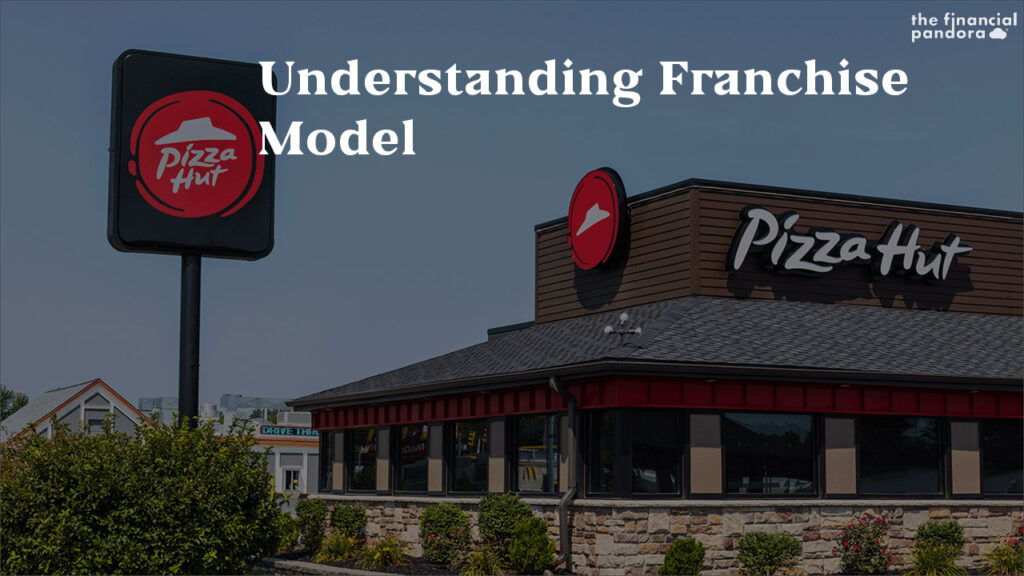A franchising is an arrangement where the franchisor provides the franchisee with an established business, including name and trademark, for the franchisee to work independently. The franchising system has developed in an unstoppable way and is contributing importantly to retail modernization. In the world of franchising all you will need to do is pick a brand add in some of your efforts and Bam!
India’s retail market is estimated to reach $1.1-1.3 trillion by 2025, from $0.7 trillion in 2019, growing at a compound annual growth rate (CAGR) of 9-11%. The retail sector in India continues to be fragmented. There is large headroom for the retailers to grow their market share from the current 5% to 10-12% in the next decade.
There was a significant turning point in the organised retailing sector and also a massive step towards global retail franchising in India when Walmart, the world’s largest retailer opted to enter India through a tie-up with Mittal family- owned company, Bharti Enterprises via the master franchise route.
The Master Franchise is a contract in which the master franchisor (Walmart) hands over the control of the franchising activities in a specified territory to a master franchisee (Bharti Enterprises).
Walmart India owns and operates B2B cash and carry stores. Their business in India is membership-based and have more than one million members and majority of them are small resellers and kirana stores. Every Day Low Price (EDLP) is the cornerstone of their strategy. Their customers can enjoy the convenience of one stop shopping since they have sifted from a super market to a hyper market and have everything under the sun.
It has almost 11500 stores all over the world. Walmart has a significance presence in Mexico, Brazil, UK etc but it hasn’t been successful in Germany and South Korea. First let’s see why Walmart failed in South Korea and then move onto why it failed in Germany.
Emart is the largest retailer in South Korea. But Emart and Walmart are at opposite poles. Koreans prefer to visit local domestic supermarkets for food purchases and daily use items. Korean consumers consider the freshness of food products very seriously and are willing to make frequent trips to supermarkets to buy small volumes of fresh produce. In contrast, American consumers, make fewer trips to supermarkets and purchase bulk-size products for longer storage. Korean consumers viewed Wal-Mart as a store to visit when they needed to purchase large non-food products and to see a variety of products, including foreign products. The local retailers such as E-Mart, on the other hand, offer discounted pricing in smaller quantities and in familiar environments similar to conventional department stores rather than warehouses, while offering more fresh produce.
Walmart also failed to chose the right location. Wal-Mart attempted to penetrate the Korean market by building stores in distant areas where land prices were low. The choice of store location was particularly important as Korean consumers’ shopping takes place in the metropolitan areas because of strong preferences for the stores with close proximity. They prefer to purchase smaller units on a more frequent basis and to have accessibility to a store, in the walking distance. Thus, it is strategically important to take over commercially crucial and high-traffic locations.
Now let’s take a look on what consequences Walmart faced in Germany. It had to shut down 85 of its stores in Germany. So, what went so wrong with Walmart in Germany? To know about it lets go back to 1997.
In 1997, Walmart bought two big German chains Wertkauf for which they paid 750 million euros and Interspar for which they paid 1.3 billion. After that they changed all stores of these companies into Walmart stores.
Let’s take a look why Walmart’s franchise model failed in Germany:
i. Walmart messed up its pricing. It used penetration pricing strategy, which involves offering products for cheap to penetrate a new market and win fresh customers by helping them save money. They dropped their prices lower than the local German stores. The German business owners didn’t like Walmart’s predatory pricing tactic, and the American giant was ordered to raise their prices by Germany’s High court.
ii. Walmart failed to understand the German culture. In America, its common for retail assistants to be talkative and friendly with their customers. Walmart decided to train its German employees to do the same. The cashiers were told to smile at customers during checkout. It backfired as smiling at strangers and acting like you know them is not in the German culture. Germany isn’t the put-on kind of society as they don’t spark up conversations or smile at someone without a reason.
iii. The employees were made to do unconventional activities like everyday at a Walmart outlet, employees had to chant ‘Walmart, Walmart, Walmart’ while doing light jumping and calisthenics. Also, the employees were not allowed to date or be romantically involved with each other. Whereas Germans didn’t like someone infringing on their right to see people or their right to be involved with a person they are interested in. And Walmart made it mandatory for its employees to report if any co-worker broke a rule. If they failed to report, they could be fired.
iv. Walmart also did not understand the German market and what the Germans exactly wanted. Let’s take an example: The American pillow cases are a different size than the German ones, due to which it ended up with huge pile of pillowcases they couldn’t sell to the Germans.
Thus, all of these things were not working well for Walmart’s success in Germany. Walmart forced a business model onto another country’s market just because it worked well in other countries. They failed to understand the laws of Germany and also didn’t grasp the culture of the country. In 2006, Walmart left Germany and ended up losing 3 billion U.S. dollars. Surprisingly, even after their failure in Germany and South Korea they are yet doing well and are successful in other countries.
Hair, Beauty, Salon and Spa Industry rarely comes to our mind when we talk about the Franchise Model. The first thing which comes to our mind is Mc Donalds, Dominos or BR.
But apart from these, the franchise model has been quite successful and often used model to scale up, in the Salon and Spa Industry. The well-known players using this business model are VLCC, Shahnaz Hussain, Affinity, B-Blunt, Toni & Guy, Jawed Habib and many more!
One of the leading players in this space is Jawed Habib Hair & Beauty Ltd. Jawed Habib and his family are in this business since ages, his father was the official hairstylist for the Rashtrapati Bhavan and his grandfather was a personal barber for Lord Mountbatten and PM Jawaharlal Nehru. Jawed Habib himself was the stylist of the Missile Man of India, late Dr APJ Abdul Kalam.
Jawed Habib believes in educating oneself along with developing the skills, which made him attend London’s Morris School of Hair Design where he learnt about hairstyling in detail. And this is a differentiating factor for his franchise, Jawed Habib himself trains the employees of the salon onsite and offsite. And hence the franchises are considered synonymous to Jawed Habib himself, increasing the trust among the consumers.
Business Strategy & Model
Coming to the business, Jawed Habib network is present in 24 states, 110 cities i.e. 875 outlets in the country along with establishments in Singapore, Kenya, Dubai, Bangladesh, Nepal. Jawed Habib says that he’s into selling franchises and not salon services. His target market is Tier 2 and Tier 3 cities, and now he’s planning to enter Talukas as well. Recently, he announced that he has the master plan ready to enter interior India, to enter Bharat.
Jawed Habib Hair and Beauty Ltd allocates 6 types of franchises namely Hair & Beauty, Hair Xpreso, The Jawed Habib, Academy, Hair Studio and The Hair Yoga. The investment required in these franchises differ and the company claims that the ROI on the franchises is around 30% -60%.
Another USP of Jawed Habib Franchise is the positioning. Jawed Habib has positioned his brand in such a way that it focuses on two segments, services for celebrities and for common man, like me and you.
Effect of COVID on Salon, Wellness and Beauty Industry
The Beauty and Wellness sector seems to be in a bad state even though the situation due to the pandemic has started improving. The effects on the hair and salon industry can be seen on a wide scale. Since they have very close contact with their clients, the risk of exposure increases multi-fold and to avoid that, the cost of operations increases with respect to the protective equipment to be used and extra sanitization costs that have to be borne by the salon.
The prices can’t be increased to a great extent as well, since there are already few customers currently and higher prices may drive the existing customers away to the competition ~ implying no pricing power. Thus, this will impact the already weaker bottom line of the salons.
The customer base is also expected to decrease where people won’t be allowed to bring companions, children below the age of 15 and elder people won’t be allowed into the parlour for safety reasons.
The upsell and cross-sell activities have also taken a halt since the services available to the consumers will also be limited and the time spent on each visit will be reduced.
Another hit to the industry is that they won’t be able to push the high margin products like shampoos, conditioners and other beauty products and loss of revenue due to loss sponsorships and in-shop advertisements.
But Jawed Habib is still optimistic about his business, he says that everyone needs a haircut and his business will keep running and in fact, he’ll expand it. He’s planning to open a training school in London to provide free training with the condition that the students should purchase his products such as shampoos, conditioners and other hair and beauty products for their salons.
Post COVID world is quite difficult to predict, but the optimism of Jawed Habib and his masterplan indicates great entrepreneurial skills and it would be interesting to see how things turn out for his business.
Every franchise business should take into consideration the local culture and practices in consideration for the success of a franchise business globally. The franchises which understand the needs of the consumers which varies geographically, demographically, etc., adapt to the local environment where they are operating go a long way in the business.
For Sources, click here.
Follow Us @
Some Unrelated Stories!




